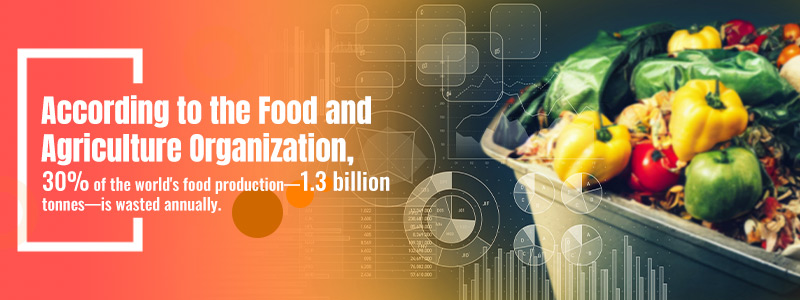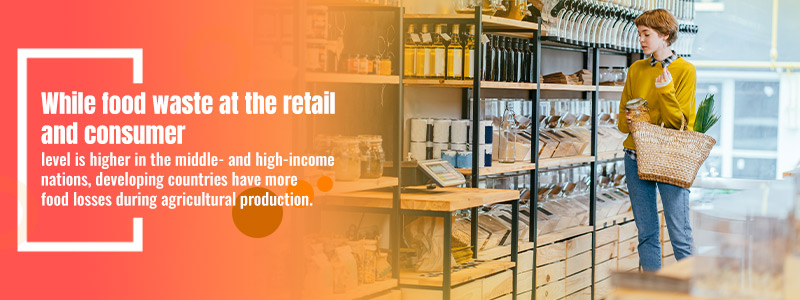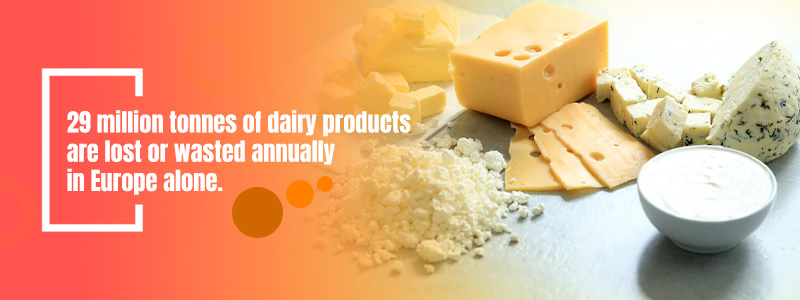Recycling is not limited to standard cans, plastics, and paper. It can also include a wide range of packaging materials. To prevent climate change and lessen food waste, step up your recycling game by upcycling food. "Upcycled foods use ingredients that otherwise would not have gone to human consumption, are procured and produced via verified supply chains, and have a good influence on the environment," claims the Upcycled Food Association. This is a crucial initiative because food loss and waste account for a startling 6% of all worldwide greenhouse gas emissions, the majority of which are caused by consumer behavior.
According to the Upcycled Food Association, ingredients used to create upcycled foods were typically destined for the food waste stream. Our current food systems result in over $1 trillion annual losses due to food waste. However, you may easily incorporate upcycling food into your everyday routine by making a few little lifestyle changes. The results are quite encouraging: The number of greenhouse gases produced by food loss and waste might be reduced by up to 70 billion tonnes by encouraging upcycling methods.

Over 30% of all food produced globally is lost or wasted, a significant issue for society and the environment. Upcycling food solves this issue by turning leftover food into brand-new, premium goods. Because 95% of us want to do our part to prevent food waste, 60% of people want to purchase more items made from recycled food. Anyone may prevent food waste through their purchases of upcycled goods. And it's now more crucial than ever.
Examples of Upcycled Foods in the Market
Leftover olive leaves from pizza. Enriched bread made using rice waste. Banana peel snacks. These foods are instances of the upcycled food trend and will soon be on our plates. Traditionally, upcycling has been associated with updating worn-out clothing or outdated furniture. However, upcycling is now entering the food industry amid worries about how much food is wasted globally. Take into account the fruit of the coffee plant, which resembles a red or purple cherry and contains the coffee bean. When coffee beans are collected, they typically end up as a byproduct that is discarded in large amounts.
However, they can be gathered, processed into gluten-free flour, and then utilized in dishes like tortillas and pastries. Upcycling proponents claim that fruits might be transformed into nutrient-dense superfoods because they are packed with fiber, potassium, and antioxidants.
Foods made from recycled materials, according to their producers, will soon be increasingly prevalent in supermarkets. Upcycling was recently named one of the top 10 food trends for 2021 by the Whole Foods Market chain. Some upcycled goods are already on the shelves of specialty markets, including upcycled veggie chips by Pulp Pantry, upcycled barley milk by Take Two Foods, and upcycled chocolate chip cookies by Renewal Mill.
The barley milks produced by Portland, Oregon-based Take Two Foods are made from the spent grain that is left over after the flavor and nutrients have been extracted during the brewing process. One estimate places the number at 38 million tones, with the best case scenario being composted or given to animals. The spent grains are a gold mine from an upcycling standpoint, though, as they are high in protein, antioxidants, and dietary fiber, which has been shown to provide protection against diabetes, coronary heart disease, and stroke.

Researchers have experimented with adding a variety of other upcycled ingredients to pasta, such as onion skin powder, carrot peel and shavings (a waste stream from, for example, making "baby carrots"), apple peel, and olive or grape pomace (remains from juicing), showing notable increases in dietary fibre and antioxidant capacity. Okara, a staple element in Japanese, Chinese, and Korean cuisine, is another recycled resource used to make nutritious pasta. Okara is a pulpy waste of soy milk and tofu production. Major tofu or soy milk producers frequently discard it. According to studies, adding okara to pasta in place of half the wheat flour can raise the amount of phenolics by 68%. Phenolics are molecules with antioxidant characteristics that may help prevent cardiovascular disease. Okara may also be included in baking mixes or cookies, as Renewal Mill does with some of its flour, baking mixes, and cookies.
Upcycled food waste ingredients have primarily been used in breads, muffins, biscuits, and other bakery goods up until now. Researchers are looking at the upcycling possibilities of waste products from the manufacturing of black currant juice, rice bran from milling and polishing rice grains, and olive leaves, which may be processed into flour and used to make pizza dough.
Upcycled Food and Recycled Food are Two Different Concepts
What comes to mind when you think about recycled food? Keep in mind that upcycling is not the same as recycling; this isn't food that has already been consumed! Don't worry if you don't know—you're not the only one. Only 10% of consumers are aware of upcycled food products, according to a 2021 study published in Food and Nutrition Sciences, but the good news is that 80% believe they would seek them out once informed. Upcycling is a type of recycling in which you take a product that would otherwise be thrown away and give it a new purpose in life rather than turning garbage into new materials.
You can update and refresh old goods using your imagination rather than recycling them in a recycling bin. Old glass jars provide as a clear illustration of the distinction between upcycling and recycling. You may have prepared a delicious pasta dish for dinner and discovered that you still have the glass sauce container. After washing it out, you can put it in the glass recycling bin to recycle it into new materials. However, if you wanted to reuse the jar, you could wash it out and use it to store makeup brushes or as a desk organizer. This revitalizes it and creates a new useful product for you to use.

The terms recycling and upcycling sound similar and are frequently confused. While both aim to improve sustainability and help the environment by reducing landfill waste, they have two very different meanings, which we will explain. Upcycling is the process of reusing (discarded objects or materials) to create a product of higher quality or value than the original. Upcycling gives things a second life; it resurrects the object with a higher user value than before. When the discarded items are somewhat unique, the process of reinvention becomes even more valuable.
Recycling is the process of converting waste into reusable material. When you recycle an item, it goes back into production and is transformed into a completely different item. Recycling can occur repeatedly, and depending on the item, there is usually some loss of recovery each time the cycle is completed. Upcycling essentially aids in achieving two of the three "R's" of recycling: reduce and reuse. It helps you reduce what is going to landfill and reuses the product you were going to throw away, giving it a second life, without the need for "degrading" it.
The discussion is in lieu of the statement, "Upcycling is the new way of recycling."
Upcycled Food: The Features
The section will allow the readers to have a closer look the concept of upcycled foods. Some of the features of upcycled foods are:

-
Upcycled Foods are Made from Ingredients that Would have Otherwise Ended up in a Landfill
Food waste destinations, according to the Food Loss and Waste Protocol, are when food ends up in places like incinerators, as animal feed, in landfills, or in anaerobic digestors. Upcycled food makes better use of the energy expended in growing, transporting, and preparing food by avoiding these destinations. Food loss and waste account for 8% of human-caused greenhouse gas emissions, which is why Project Drawdown considers reducing food waste to be the single most important solution to climate change.
-
Upcycled Foods are Products with Added Value
Globally, we waste or lose approximately $1 trillion in food each year. Upcycled food captures and leverages that value to create a more sustainable and resilient food system.
-
Humans Can Eat Foods Made from Recycled Materials
The goal of upcycling food is to use it to its fullest potential. Foods that have been recycled are meant for human consumption, but they can also be found in cosmetics, pet food, animal feed, and other products.
-
A Supply Chain Auditable for Upcycled Food Exists
Food that is never consumed is grown on 28% of farmland. By utilizing all the nutrients produced on farms and assisting farmers in getting more value out of their land, the auditable supply chain assures that repurposed food is actually assisting in the reduction of waste. Food that has been recycled will aid in feeding a growing population without contributing to more deforestation or adding to environmental stress.
-
On the Labels of Upcycled Foods, the Ingredients are Identified
More than half of consumers want to purchase more foods that have been recycled. By purchasing upcycled food, regular people may help put an end to food waste. Customers are informed that their money is being spent in a way that is consistent with their values via labels that identify which ingredients are upcycled.
Upcycled Food: The Challenges
It is no surprise that gaining consumer acceptability could be difficult. If the product has an excessive amount of recycled ingredient, as is the case with okara, one problem could be the flavour or texture. Psychology is another factor to consider. Some individuals find the concept of consuming food that contains "waste" repulsive. An analysis of research from 2021 revealed that, with the exception of those customers who are more environmentally sensitive, people are unwilling to pay more for upcycled foods than they do for conventional items.

The third problem is the production cost and supplier chain. Obtaining food waste and converting it into something usable costs money, despite the fact that it is stuff that is being thrown away. For example, grain and soy beans are low cost commodities to begin with, so if you are manufacturing something from discarded grain, you may wind up paying more to stabilize it, transport it, and use it than you would if you bought grain outright.
From an environmental standpoint, it may seem like a no-brainer improvement to reuse food waste rather than dispose of it in landfills. Manufacturers capitalize on this by using catchphrases like "Fight climate change from your kitchen" to promote their goods. However, further research is required to determine how much upcycling could reduce the carbon footprints of particular food items. According to studies, upcycling is insufficient to significantly reduce food waste. As substitutes, we must focus on prevention, particularly in our kitchens. Even still, upcycling food waste is the proper thing to do even though it "is not a silver bullet."










